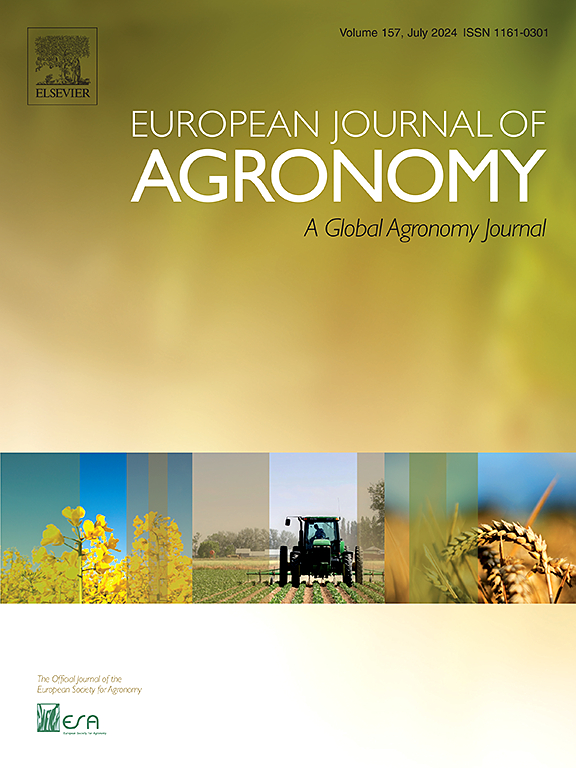Intercropping-driven maize yield gain depending on regional environments, planting conditions, and production managements: A global-scale evidence
IF 4.5
1区 农林科学
Q1 AGRONOMY
引用次数: 0
Abstract
Intercropping has been widely adopted to enhance maize (Zea mays L.) productivity. However, its global yield benefits remain unclear across varying regions, climates, soil properties, crop combinations, and agricultural practices. A meta-analysis encompassing 1819 records from 49 countries was conducted to evaluate the yield benefits of maize intercropping systems and their main drivers. Global dataset revealed that intercropping significantly increased average maize yields by 4.5 ± 0.5 % compared to monoculture. A higher yield in intercropping maize than the monoculture was only observed in just over half of the records. The intercropping systems in Asia and Africa showed a yield increase, but those in South America, North America, and Europe showed a yield decrease. Intercropping with legumes (4.7 ± 0.5 %) resulted in higher yield benefits than that with non-legumes (3.5 ± 1.1 %), particularly when peanuts were included (15.4 ± 1.6 %). Intercropping with non-grain crops yielded more significant benefits than that with grain crops. In intercropping systems, the optimal crop community structure for yield benefits includes a maize row spacing of 40–60 cm, maize planting density of 50,000–75,000 plants ha-1, distance between maize and accompanying crops of 40–60 cm, and an intercropping ratio of 2:4 (two maize strips and four intercrop strips). Yield increases were most pronounced in silt-loam soils or soils with a pH above 6.50. Intercropping significantly boosted maize yields without nitrogen and potassium fertilizers but declined in phosphorus absence. Geographical and climatic factors also played significant roles, with the highest yield benefits observed at latitudes of 10–50°, altitudes of 500–1500 m, mean annual precipitation (MAP) below 800 mm, and mean annual temperature (MAT) below 18°C. Among the intercrop types and crop community traits, maize inter-row spacing showed the greatest impact on intercropping-driven yield benefits, followed by the distance between adjacent crops. Regarding soil and fertilization conditions, soil pH and potassium input rate were the main factor influencing the yield benefits. Among geographic and climatic variables, MAP had the greatest effect, followed by MAT. These findings demonstrate the performance of intercropping in enhancing maize yields and underscores the need for more optimization to maximize its potential in diverse environments and farming practices.
求助全文
约1分钟内获得全文
求助全文
来源期刊

European Journal of Agronomy
农林科学-农艺学
CiteScore
8.30
自引率
7.70%
发文量
187
审稿时长
4.5 months
期刊介绍:
The European Journal of Agronomy, the official journal of the European Society for Agronomy, publishes original research papers reporting experimental and theoretical contributions to field-based agronomy and crop science. The journal will consider research at the field level for agricultural, horticultural and tree crops, that uses comprehensive and explanatory approaches. The EJA covers the following topics:
crop physiology
crop production and management including irrigation, fertilization and soil management
agroclimatology and modelling
plant-soil relationships
crop quality and post-harvest physiology
farming and cropping systems
agroecosystems and the environment
crop-weed interactions and management
organic farming
horticultural crops
papers from the European Society for Agronomy bi-annual meetings
In determining the suitability of submitted articles for publication, particular scrutiny is placed on the degree of novelty and significance of the research and the extent to which it adds to existing knowledge in agronomy.
 求助内容:
求助内容: 应助结果提醒方式:
应助结果提醒方式:


